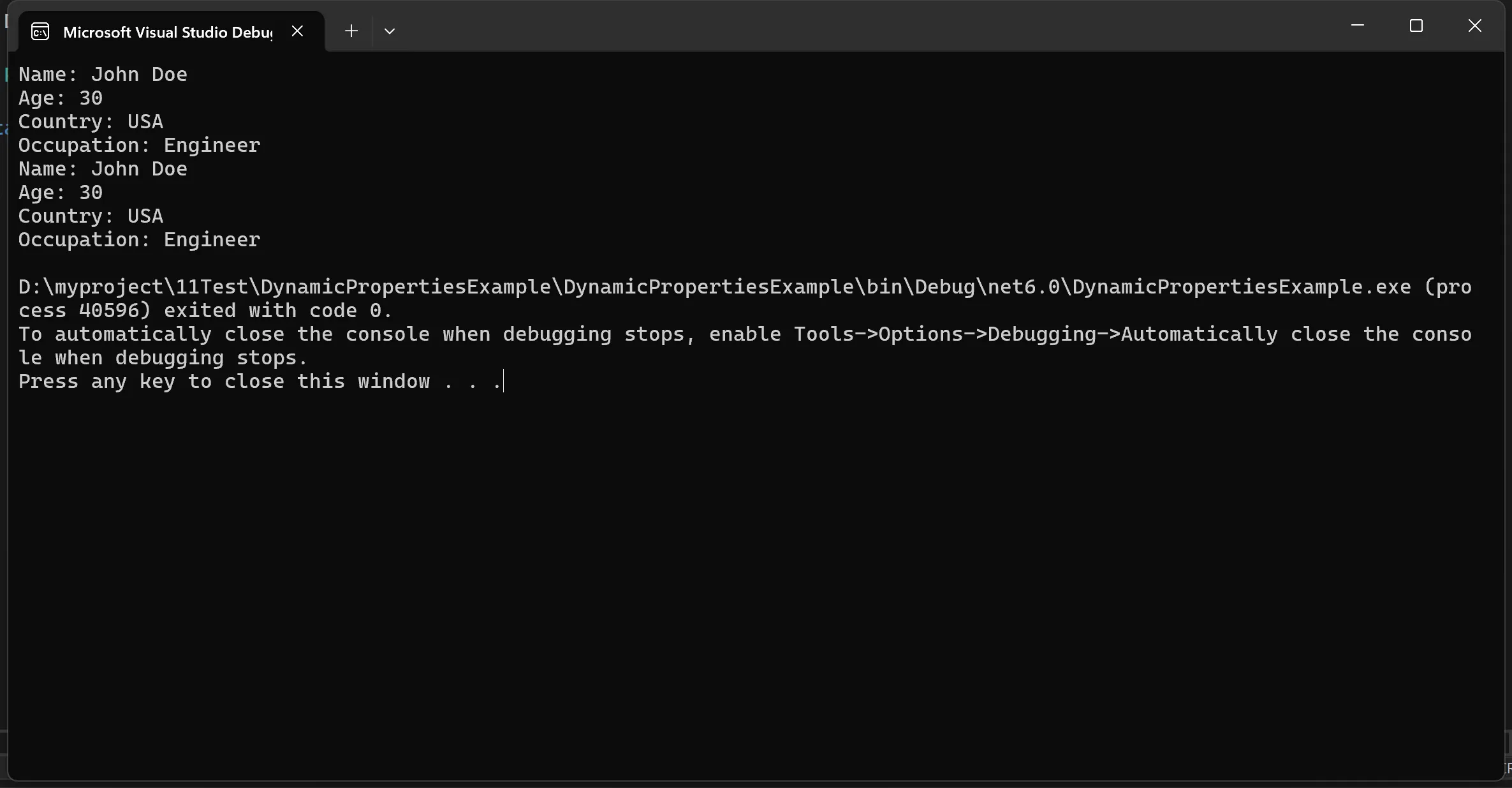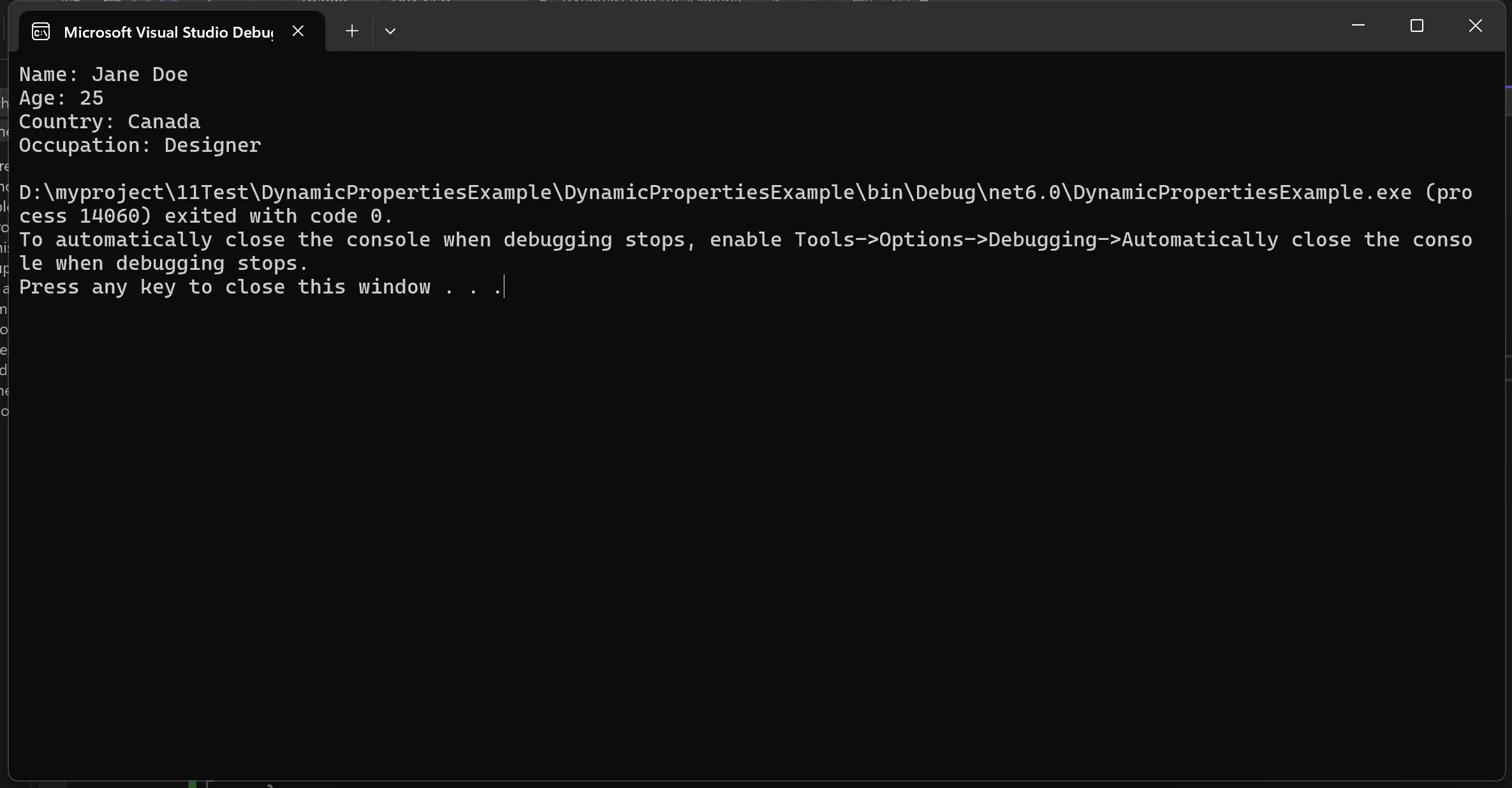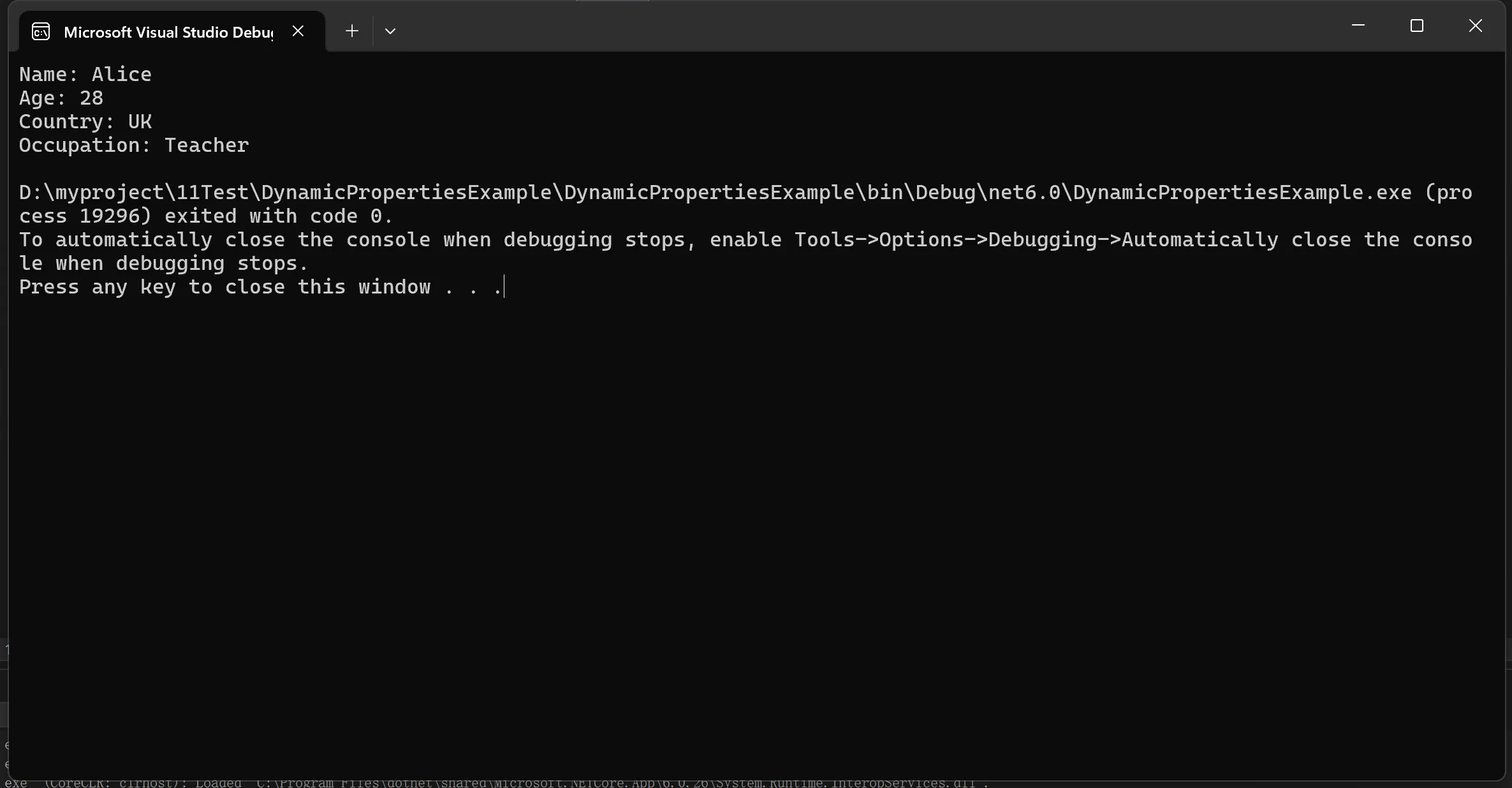请注意,本文编写于 180 天前,最后修改于 180 天前,其中某些信息可能已经过时。
目录
在 C# 中,给现有对象动态添加属性并不像 Python 或Javascript那样直观,因为 C# 是一种强类型语言。然而,我们可以通过使用一些技巧和库(如扩展方法、字典、ExpandoObject 等)来实现这一点。本篇文章将详细介绍如何在 C# 中实现这一目的。
方法一:使用 ExpandoObject
ExpandoObject 是 .NET 提供的一个特殊类,允许动态添加属性。它实现了 IDictionary<string, object> 接口,这意味着你可以像操作字典一样动态添加属性。
示例:
C#using System;
using System.Dynamic;
namespace DynamicPropertiesExample
{
class Program
{
static void Main(string[] args)
{
dynamic expando = new ExpandoObject();
expando.Name = "John Doe";
expando.Age = 30;
// 添加新的属性
expando.Country = "USA";
expando.Occupation = "Engineer";
// 打印输出
Console.WriteLine($"Name: {expando.Name}");
Console.WriteLine($"Age: {expando.Age}");
Console.WriteLine($"Country: {expando.Country}");
Console.WriteLine($"Occupation: {expando.Occupation}");
// 遍历所有属性
foreach (var prop in (IDictionary<string, object>)expando)
{
Console.WriteLine($"{prop.Key}: {prop.Value}");
}
}
}
}
输出:

方法二:使用匿名类型
匿名类型也可以用来动态添加属性,虽然它们通常用于静态场景,但这也是一种方法。
示例:
C#using System;
namespace DynamicPropertiesExample
{
class Program
{
static void Main(string[] args)
{
var person = new { Name = "Jane Doe", Age = 25 };
// 使用匿名类型创建另一对象来添加新属性
var extendedPerson = new
{
person.Name,
person.Age,
Country = "Canada",
Occupation = "Designer"
};
// 打印输出
Console.WriteLine($"Name: {extendedPerson.Name}");
Console.WriteLine($"Age: {extendedPerson.Age}");
Console.WriteLine($"Country: {extendedPerson.Country}");
Console.WriteLine($"Occupation: {extendedPerson.Occupation}");
}
}
}
输出:

方法三:使用扩展方法
虽然扩展方法不能直接添加属性,但它可以让你扩展现有类型的功能。同样,我们可以通过组合字典来实现类似效果。
示例:
C#using System;
using System.Collections.Generic;
namespace DynamicPropertiesExample
{
public class Person
{
public string Name { get; set; }
public int Age { get; set; }
}
public static class PersonExtensions
{
private static readonly Dictionary<Person, Dictionary<string, object>> _additionalProperties = new();
public static void AddProperty(this Person person, string propertyName, object value)
{
if (!_additionalProperties.ContainsKey(person))
{
_additionalProperties[person] = new Dictionary<string, object>();
}
_additionalProperties[person][propertyName] = value;
}
public static object GetProperty(this Person person, string propertyName)
{
if (_additionalProperties.ContainsKey(person) && _additionalProperties[person].ContainsKey(propertyName))
{
return _additionalProperties[person][propertyName];
}
throw new KeyNotFoundException($"Property '{propertyName}' not found.");
}
}
class Program
{
static void Main(string[] args)
{
var person = new Person { Name = "Alice", Age = 28 };
// 添加动态属性
person.AddProperty("Country", "UK");
person.AddProperty("Occupation", "Teacher");
// 获取并打印属性
Console.WriteLine($"Name: {person.Name}");
Console.WriteLine($"Age: {person.Age}");
Console.WriteLine($"Country: {person.GetProperty("Country")}");
Console.WriteLine($"Occupation: {person.GetProperty("Occupation")}");
}
}
}
输出:

结语
通过上述几种方法,我们可以在 C# 中动态添加多个属性到现有对象中。尽管 C# 是一种强类型语言,但通过这些技巧,我们依然可以实现反射、扩展对象功能等动态特性。根据具体需求选择合适的方法,可以有效地提升代码的灵活性和可扩展性。
本文作者:rick
本文链接:
版权声明:本博客所有文章除特别声明外,均采用 BY-NC-SA 许可协议。转载请注明出处!
目录